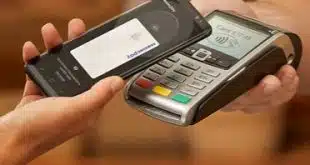Merchants must install the technology today’s customers demand—or risk losing sales.
Millennials and Gen Z consumers are not only more tech-savvy and better-informed shoppers than prior generations, they’re also seeking a greater connection to their preferred brands. And they desire a more curated shopping experience that feels unique and genuine to them.
As a result, retailers must capitalize on available technology to understand these customers’ preferences and provide them with exactly what they want, when they want it, in the way they want to receive it.
The checkout process plays an invaluable role in the user experience no matter the devices, technology, or method used to complete the transaction. One of the biggest mistakes in today’s hypercompetitive retail landscape—and one of the quickest ways to kill customer loyalty—is to make the checkout process long, difficult, or limited.
A report from Adyen NV, which surveyed more than 2,200 consumers and 500 retailers, found that 85% of merchants cite poor payment experiences as the key reason for lost sales. Additionally, 56% of respondents indicated they wanted more payment options, and 34% admitted they would abandon the checkout if the store requires them to create an account.
Four Key Trends
While there are lots of ways merchants can improve their checkout processes, here are four specific payment trends that should inform retailers’ point-of-sale strategies:
M-commerce. According to the latest estimate from Pew Research Center, more than 5 billion people have mobile devices today, and over half of those devices are smart phones. In the United States, 81% of adults report owning a smart phone.
Similarly, 80% of Americans shop online, and more than half use their phones to make purchases. Smart phones, always in hand or close by, are a convenient way to place restaurant orders, purchase items for in-store pick up, or pay a bill.
The shopping-via-smart phone trend doesn’t appear to be slowing down. Mobile e-commerce sales accounted for 34.5% of total e-commerce sales in 2017, and by 2021 that number is projected to be 54%. Total annual m-commerce sales are expected to increase from $207 billion in 2018 to $338 billion in 2020, according to Statista.
Mobile/Contactless. Although mobile wallets are still in the early adoption stages, payment processor Total Merchant Services declared mobile wallets would be the most significant trend of 2019. Major mobile wallet providers such as PayPal, Apple Pay, Samsung Pay, and Google Pay use near-field communication (NFC) technology, which allows devices to communicate with each other when they’re in close proximity.
Some of the advantages of mobile wallets are that payments can be made by simply logging into your account with an email or user name and password (a process that’s further simplified with biometric-based logins such as retina or thumbprint scans).
Additionally, transactions and balances can be viewed online via a browser or mobile app. Plus, money can be sent and received quickly, and currency-exchange services are available for international purchases for a fee.
A 2018 study by Merchant Machine revealed that 39% of the global population of smart-phone users owned mobile wallets. Other studies estimate that 58% of all Millennials are ready to make the complete switch to mobile wallets right now.
Unattended payments. A 2018 SOTI consumer survey found 66% of shoppers favor self-service technology over interacting with sales associates. Additionally, 77% of consumers say they’d be comfortable in a retail setting where there’s only self-checkout—no sales associates at all. Some merchants also find that self-service kiosks can help increase average tickets with consistent upsell offers.
P2P Payments. Many consumers have discovered the convenience of peer-to-peer payment apps such as PayPal’s Venmo, Square’s Cash App, or Zelle when they’re transferring money to family or friends.
The P2P trend picked up steam during the second half of 2019 with providers like Venmo enabling instant transfer of digital funds into bank accounts. As younger consumers move further away from traditional banking—seeking speed in payments, where settlement is marked in minutes and seconds instead of days—P2P will continue to enjoy a meteoric rise.
By the end of 2022, eMarketer predicts over half of mobile phone users, or 52.5%, will have made at least one P2P payment within the past month. Millennials will drive the growth, the research firm predicted. P2P payment apps are making their way into the business world, too, allowing consumers to use them to make online purchases and retailers should be taking note.
Closing Sales
One of the biggest challenges retailers face today is consumers’ differing payment preferences. Apple users may prefer Apple Pay, whereas Android users may like Google Pay or Samsung Pay. Other customers may prefer Venmo, PayPal, Square, or WeChat.
The point is that there’s no de facto standard when it comes to mobile and P2P payment preferences, and merchants shouldn’t try to force customers into just one or two options. The best practice to follow when you’re evaluating payment terminals is to find out which contactless mobile payments the hardware vendor and payment processor support and give preference to those offering more choices.
When it comes to serving today’s tech-savvy consumers, removing friction from the checkout process is a vital step to closing more sales (online as well as in-store) and gaining a real advantage over your competitors.
—Mauricio Chacon is group product manager for Epson’s North America point-of-sale (POS) solutions division.




